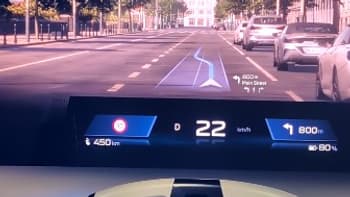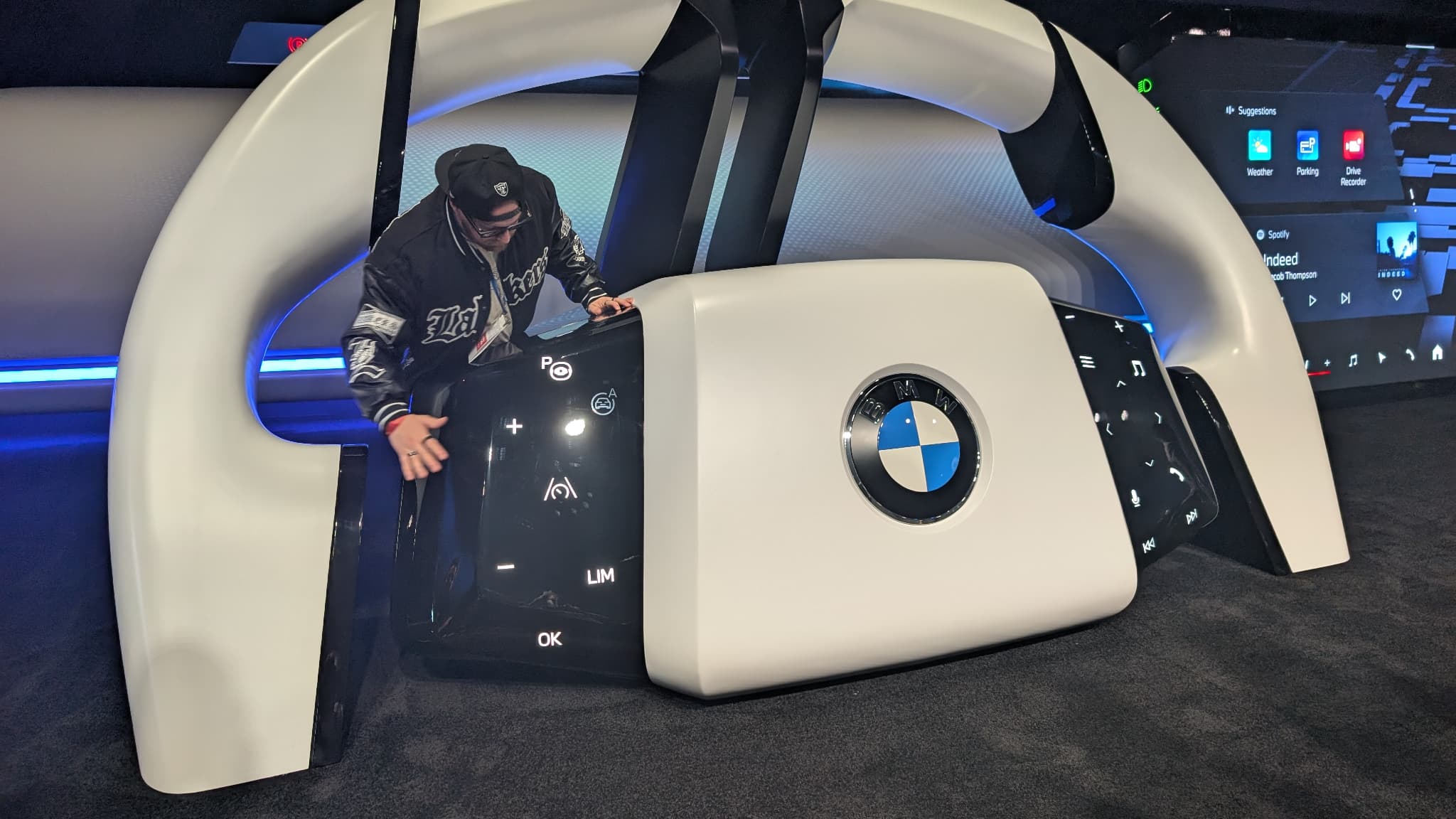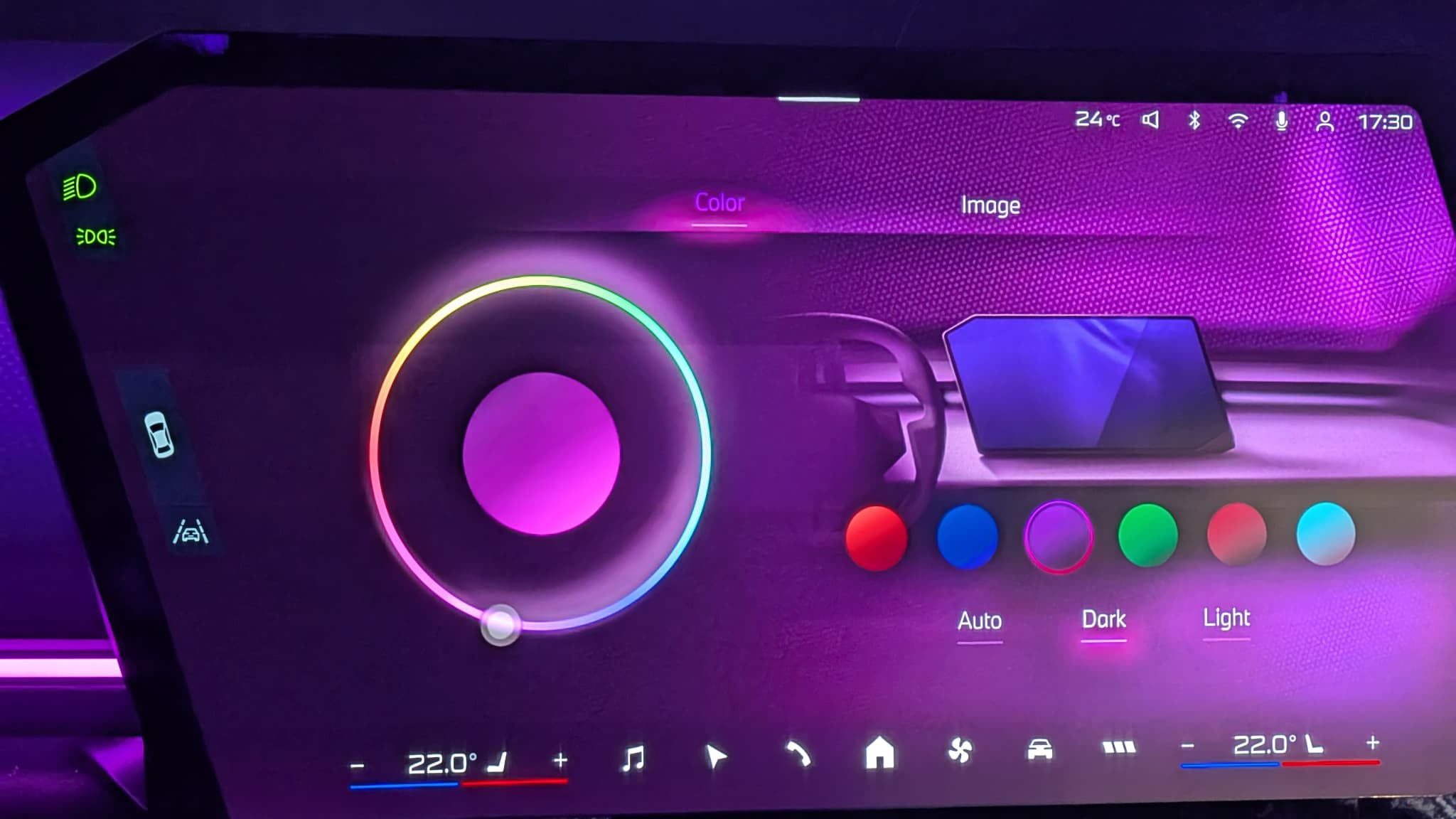A great revolution is coming at BMW. At the CES in Las Vegas this Tuesday, January 7, the German brand presented the digital environment, the Panoramic iDrive, which will equip all its new models starting at the end of 2025.
An original presentation where this new generation driving position appeared on stage in a greatly enlarged size and with a giant screen to simulate a windshield and driving scenarios.
Also a way to maintain the mystery of the first vehicle that can benefit from it. If BMW has not yet confirmed it, everything suggests that this will be the long-awaited next generation of its iX3 electric SUV, which will also inaugurate the new “Neue Klasse” multi-energy platform in the second half of 2025.
A central screen that detaches from the counters
BMW doesn’t deviate from its standard of a driving position oriented toward the person holding the steering wheel, but it has completely revised its copy. Gone is the elongated screen divided into two, for the counters and infotainment that we found in the models of recent years.
The central screen somehow regains its independence, all with an atypical format, which retains a general rectangular shape, but with the upper left and lower right corners beveled. Enough to provide a certain personality and break the tablet effect placed on the dashboard of many current models. There you will logically find the 3D GPS map and the music or radio settings. These will always appear on the driver’s side, for easier interaction, leaving the mapping on the right side.
Along these same lines, the air conditioning settings will always be present at the bottom of this screen, the size of which is not yet given by BMW, reasonable at first glance, but certainly a notch below the 15 inches that we find in the Tesla. Model 3 and Model Y.
A long strip from counters to widgets
Another strong indicator of this new architecture is that the gauge display is now part of a long strip located just below the windshield. At the wheel, BMW emphasizes the desire for clarity, with the information linked to the driving assistants on the left, in the center the speed and gear or mode engaged (forward, reverse, park or neutral) and on the right the information linked to Autonomy and consumption. But this counterpart therefore extends to the right rearview mirror, with the possibility of placing the widgets you choose. A great possibility of customization, like on a smartphone, with these modules that allow you to control, for example, the time or the music you are listening to.
During the presentation at CES, the change to sport mode changed the associated classic red, but adding performance information: percentage of pressure on the accelerator pedal or available power and torque.
A head-up display prepared for autonomous driving
In addition to the instrument screen, the driver will also be able to use a new head-up display, whose information is projected directly on the windshield. BMW already had one of the most complete on the market, which in particular allowed the display of maps and, therefore, should remain at the forefront. Navigation instructions will appear more clearly, indicating for example the route to take at a junction and not a simple direction arrow.

During driving, initially highly assisted and no doubt soon autonomous, the vehicle will be able to indicate its intentions, such as changing lanes for example. Enough to reassure future BMW drivers, who have become, at least on certain occasions, passengers.
A steering wheel is expected in the curve.
Finally, This environment will be completed with a new steering wheel. We will also keep the organization clear, with the buttons linked to driving assistants on the left, and those for entertainment or taking a call on the right.

We can also invoke a personal assistant still on this right side and as an alternative to the voice command “Hello BMW”. During the presentation, a new avatar appeared in the center of the counter screen banner. An emoticon without a mouth that looks quite cold, particularly in contrast to the Reno assistant inaugurated in the latest R5.
But what worries this avatar the most are the buttons on this steering wheel. Haptic and touch controls but with vibration feedback to simulate support. Let’s see what this will do despite the recent bad example. In fact, Volkswagen has finally changed course on this point, after too much criticism, returning to classic shortcuts.
BMW, however, seems to have learned its lesson from its compatriot. “The buttons have a raised and well-designed surface, which makes them extremely easy to locate and allows the driver to press them without having to take their eyes off the road,” specifies the brand’s press release.
A new operating system to give life to this set
Behind the scenes of this digital environment, BMW will be able to rely on a new operating system, the “BMW Operating System X”. A crucial invisible part in today’s car that will allow for good operation and upgrades to add new functions.
A new system developed internally, but based on an Android base, as we have seen in Porsche in its latest models. An interesting alternative to Google Automotive, chosen by Renault, which allows a more personalized digital environment, where the French brand prefers to apply an overlay, while guaranteeing future compatibility with a large number of applications.
Source: BFM TV


